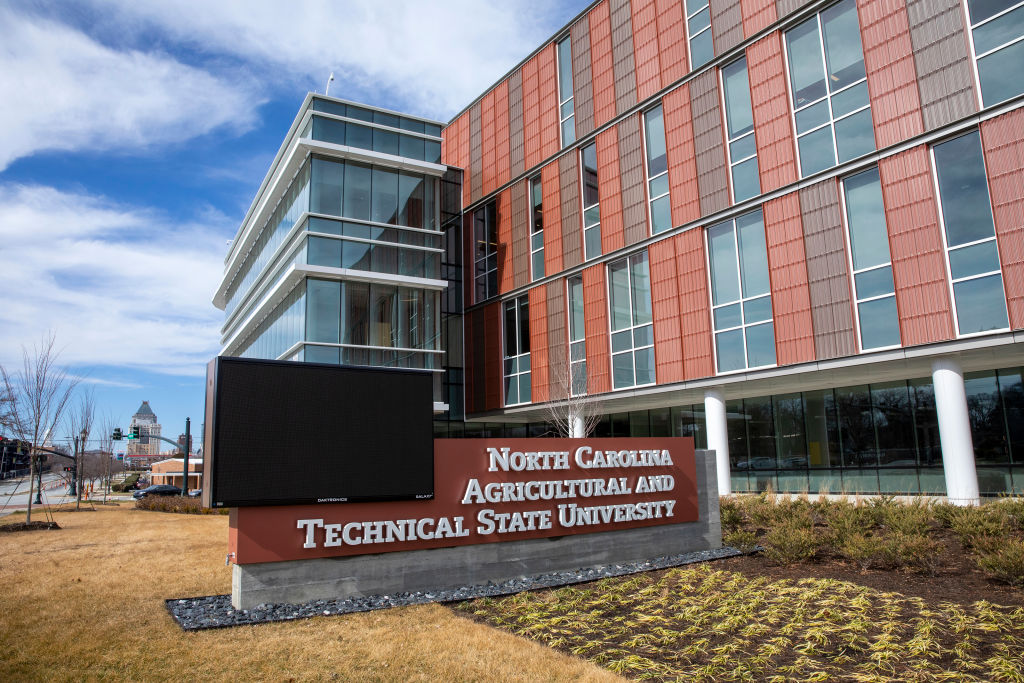
August 23, 2024
How A.I. Has Helped North Carolina A&T State Becoming A Driving Force In The Agriculture Industry
Way to go, Aggies!
WUNC reports that using artificial intelligence — or A.I. — has made North Carolina A&T State University, an HBCU in Greensboro, a leader in the agricultural studies industry.
Harmandeep Sharma, a crop science researcher and professor in the Department of Natural Resources & Environmental Design at the HBCU, is helping students put the past images of what farm life is supposed to look like to rest.
While most picture a farm as a farmer working in soil and in a field of crops all day, that’s not the case, especially in her agricultural lab. Students and visitors will see rows of crops embedded with sensors and drones flying overhead to monitor the fields. Sharma’s hands are also not dirty with soil, but she holds her laptop while she inserts daily data on the crop’s health. “There has been a very rapid advancement of agriculture over the past couple of years,” Sharma said.
“With this technological advancement, we have sensors, we have drones. We are in the era of Agriculture 5.0.”
She thanks A.I. for the latest venture in an era of data-driven agriculture. In 2023, the U.S. Department of Agriculture (USDA) invested $20 million into a climate-based A.I. project under the leadership of the University of Minnesota, one of several A.I. agriculture projects funded by the federal government. In the Tar Heel state, the North Carolina General Assembly invested $1 million in an A.I. partnership between A&T, North Carolina State University, and analytics firm SAS.
The firm deployed an A.I. platform for the agriculture departments of both schools in March 2024. SAS’ principal advisor, John Gottula, says the platform, used by 14 HBCU programs, has helped researchers make more precise and faster conclusions. “It breaks down that silo between people who know the subject matter and people who know the data science,” he said.
“Subject-matter experts are now able to query that data and crunch those numbers in a meaningful way, where they can quickly recognize what’s realistic and what’s not.”
Sharma conducts research on fresh market tomatoes, industrial hemp, and hot peppers at an environment-controlled greenhouse and outdoor field, which has natural changing conditions on a farm just a few miles away from A&T’s campus. With attached sensors, students under the professor’s leadership measure air temperature, carbon dioxide levels, and water uptake.
The data is then fed into the SAS platform, which assists Sharma with making crucial predictions and gives her the capacity to “generate hundreds of models at one time.” Before the technology was introduced, Sharma said she and other researchers were forced to do “blind average applications,” having to decide on one nitrogen or water level rate to apply on the entire field. Now, with the use of A.I., she is able to map her field out and give distinctive amounts of water, nitrogen, or fertilizer to plants in need, something that will also help many local farmers. “It’s not just environmentally sustainable because we are not polluting our waters, but it is also helping farmers with the money,” Sharma said.
“They are not overspending on fertilizers that are not helping their crops in any way.”
According to HBCUBuzz, the USDA has invested in other HBCUs nationwide to advance their agriculture programs. In May 2024, the agency announced a $30.8 million investment as part of a commitment to all 19 land-grant HBCUs. As a collaborative effort with the National Institute of Food and Agriculture’s 1890 Institution Teaching, the Research and Extension Capacity Building Grants Program will support scientific research to address some of the country’s growing agricultural challenges.